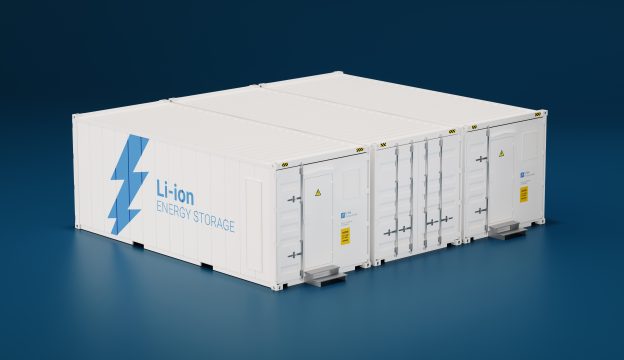Since launching its first vehicle in 1998, the smart brand has always focused on exploring new venues in the realm of sustainable mobility. While hybrid electric power figured into the fortwo's design equation from the start, it wasn't until the latter part of the last decade that the automaker actively moved its diminutive city car into this even cleaner, greener arena. We recently got a chance to slip behind the wheel of the latest variation on that theme -- the 2010 smart fortwo electric drive -- for an early but informative look at where the brand believes a significant portion of its future lies.
In truth, this initial encounter would really be more accurately categorized as a preview of a preview. Although identical to the second-generation smart EV variant that debuted in Europe last December and the same vehicle that will arrive here in limited numbers for "evaluation" purposes starting in the fall, this incarnation will be replaced by a revised Gen III "production-spec" successor that's set to roll into our showrooms in January 2012 as an early 2013 model.

What's up
Unlike the original smart fortwo electric drive that began limited Euro testing in 2007 fitted with a sodium-nickel-chloride (NaNi-Cl) battery, this version carries a smaller and more efficient 16.5kW Lithium-ion (Li-ion) pack developed by Tesla Motors. It powers an electric motor/generator that delivers a sustained 20kW output but can crank out a 30kW "peak" for shorter acceleration bursts. Smart says the fortwo electric drive will run from 0-60 kph (37 mph) in the same 6.5 seconds it takes a gasoline version to hit that mark. With its 88 lb.-ft. of torque on hand from zero revs, it is a bit quicker off the line, even though heavier powertrain elements bump its curb weight by almost 300 pounds.
The fortwo EV also nets a single-speed automatic transmission in place of the not-exactly slick-shifting five-speed dual-clutch automated manual gearbox used in the gasoline-engine car. However, with its top speed limited to 62 mph, the fortwo electric drive is not quite as ready for prime-time freeway work as its conventional kin. A 110V/220V on-board charger can bring the well-protected battery pack up to full power in eight hours using the latter voltage or run it from 20 to 80 percent in about three and a half. Smart says the car's nominal 82-mile range will be sufficient to get typical users through at least a full day of driving. However, given the experiences reported by drivers of other EVs, don't be surprised to see that already modest figure dip considerably under the rigors of real-world use.
Our test routes, which encompassed a variety of crowded urban venues in Brooklyn, New York, provided meaningful insight as to the basic capabilities of this super-clean smart in its natural element. Inside, the layout carries over virtually intact, and thanks to careful packaging the conversion to electric drive sacrifices no space inside of the cabin. The most notable changes are that the two circular gauges sitting atop the dash that normally house a tachometer and clock now provide info on the current battery charge level and whether you're adding or subtracting to that amount at any given moment.
Slip the shift lever into "D," and the fortwo electric drive steps out, well, smartly. With its short wheelbase and responsive handling, this petite two-seater happily zipped in and out of traffic, although it was considerably less delighted about close encounters with rough road surfaces and even modestly-scaled potholes, both of which pressed the more heavily laden rear suspension to its comfort/compliance limit and beyond. Like other EV/hybrid offerings, the fortwo electric drive uses regenerative braking for on-the-fly battery replenishment. Unlike several other vehicles, the smart's well-modulated setup executed that critical function in a commendably transparent but effective manner.
What's ahead
To help it gain broader knowledge of the EV environment around the world Daimler AG, parent company of smart as well a Mercedes-Benz, is building 1,500 of these fortwo electric drive vehicles, of which 250 will be heading to America beginning this autumn. Like the conventional fortwo, overall marketing duties will be handled by smart USA Distributor LLC, a subsidiary of Penske Automotive Group, Inc. However, initial distribution is being targeted at five key locations -- Portland, Oregeon; San Jose/San Francisco Bay, California, Tampa Bay, Florida, Indianapolis, Indiana; and the I-95 Corridor, which encompasses Massachusetts, New Jersey, New York and Washington D.C. According to smart, Austin, Texas; Detroit, Michigan; and Los Angeles, California will be added to that group at a later date. As for acquisition specifics, only 50 vehicles will be made available to individuals with the remainder destined to see high-profile duty in various corporate fleets. Driving one under any circumstances will involve committing to a 48-month lease and a $599 monthly payment.
Save for confirming that the series-production version of the smart fortwo electric drive will be fitted with a new and more efficient Daimler-designed Li-ion battery, smart execs offered no details on how the enhanced 2013 model will differ from these well-finished test variants. However, we were advised that pricing for the 2013 smart fortwo electric drive would not necessarily reflect the rather heady lease premium commanded by these "beta" fleet cars.
One bit of smart-related techno news that did emerge involves the availability of the new Smart Drive iPhone app that was previewed at the Geneva Auto Show. Used in conjunction with the optional Smart Drive kit and dedicated iPhone cradle, this $9.99 download is the electronic equivalent of a high-end integrated head unit that can bring everything from Pandora Internet radio and Google maps to a full turn-by-turn navigation system (due to go live in the fall) into any smart fortwo model.







